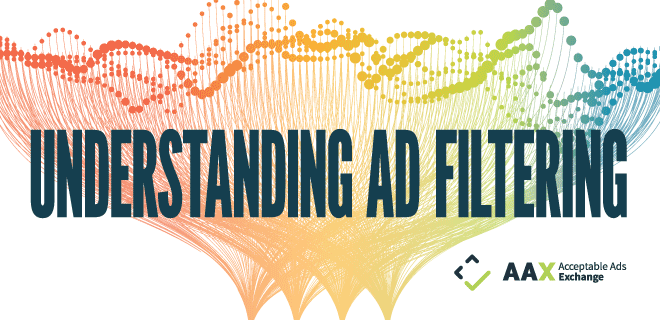
We live in an all-or-nothing world, and many people think that, when it comes to online ads, people are either ok with seeing all of them or using ad blockers to see none of them.
So what’s prompting users — and there are hundreds of millions — to install ad blockers?
A new study released by AAX: Why Block Ads? Behind User Reasons and Motivations, sifted through years of data on internet behavior collected by GlobalWebIndex (GWI). The goal? Getting to know more about ad filterers, a large demo defined by GWI as “selective ad-blocking users” a.k.a. folks who have installed ad blockers but also allow ads to be served.
An Inconvenient Truth
Anything that disrupts a user’s experience is a top reason people use ad blockers. And, annoying ads even trump privacy concerns. Sixty percent of people use ad blockers to prohibit seeing irrelevant and annoying ads while 47% use them to protect their devices from viruses or bugs potentially embedded in ads.
Forty-six percent of ad filterers find online ads way too intrusive; 43% want to speed up page load; 37% complain ads take up too much screen time and interrupt their experience, and 36% admit to avoiding video ads that appear before watching clips and/or TV shows. When a new episode of “The Handmaid’s Tale” drops, every second counts.
Surprisingly, data collection and overall privacy are lower-level concerns with only 29.8% of ad filterers blocking personalized ads from their browsing history.
At the end of the day, people care more about being inconvenienced by oversized ads than if their data is being collected and what companies are doing with it.
Don’t Mess With My Data Plan
One might wager that despite how minimally concerned ad filterers were about their privacy in 2020 — a year when the ad tech ecosystem was challenged by privacy regulations and big tech privacy platform changes — they must’ve cared even less in 2017.
In reality, concern for privacy was higher in 2017, but not by much; interest went from 29.1% down to 28.9% in 2020. In fact, every concern and motivation behind using ad blockers in 2020 declined except one: the data plan. Users are so concerned about maxing out their allotted monthly data that utilization for ad blockers jumped from 16.2% in 2017 to 18.7% in 2020.
No Matter the Age, Ads Are Annoying
It seems a no-brainer to assume Boomers, Gen X, Millennials, and Gen Z would have varying reasons for installing ad blockers. We know what happens when we assume; data found that each group overwhelmingly used ad blockers because too many ads are annoying or irrelevant.
Out of the five reasons to use ad blockers — ads are too intrusive; ads sometimes contain viruses or bugs; there are too many ads on the internet; to speed up page loading times; too many ads are annoying or irrelevant — Gen X, Millennials and Gen Z priorities were identical. These demos ranked too many ads are annoying or irrelevant first, followed by too many ads on the internet; ads sometimes contain viruses or bugs; ads are too intrusive and to speed up page load times.
Boomers strayed from the course, placing less priority on ads containing viruses and page-load time than on the number of ads and their irrelevance.
He Said, She Said
While both men and women equally agree that there are too many ads on the internet, men are more apt to use blockers in an effort to speed up page load times and remove intrusive ads while women are blocking ads to protect their devices from viruses and to eliminate annoying and irrelevant ads.
Education-wise, many ad filterers have postgraduate degrees and above. Overall, the survey received more participation from those with high school education, but the reasons for ad-block usage didn’t vary that widely from an education standpoint.
For example, 45.6% of high school graduates use adblockers to remove intrusive ads compared to 46.8% of college graduates and 44.4% postgraduates.
Postgraduates are less concerned about viruses and bugs in ads — 40.9% —compared to high school and college grads at 49.5% and 45.3% respectively.
COVID-19 softened some user perceptions like the irrelevance of ads (from 59.3% to 57%) and their intrusiveness (from 47.7% to 44.4%) between the end of 2019 and the third quarter of 2020, but one area ad filterers did not get soft about is avoiding ads.
During the same time frame, filterers increased fervor for avoiding all ads everywhere, from TV to online from 33.3% to 34.1%. Not a significant hike, but it’s the only category that saw an increase during the pandemic.
Finding the Balance
What does this mean for publishers? Maybe it’s time to revisit how many ads run in your newsletters and on your website. Retest how they look on both desktops and mobile devices. Don’t allow ads to start playing the moment someone visits your site. Maybe it’s time for a website reorganization so visitors won’t feel that content is overtaken by advertising.
For advertisers, think less is more. What’s attention-grabbing and clever to you might be loud and obnoxious to potential consumers. Rethinking your creative strategy might mean the difference between a sale and never being seen.
For both publishers and advertisers: think like a customer! What would you like to see and not see? How many ads could you tolerate throughout your own user experience?
Instead of thinking about ad blocking as a problem, start thinking about how you can better engage this audience. While a massive number of people block ads, up to 90% of those are ad filterers — choosing to only see acceptable ads. What does this mean? This is a savvy audience, they get that in exchange for free content, they’re going to be shown some advertising so that publishers can pay the bills.
Just remember: ad filterers don’t hate ads, they just don’t like invasive or irrelevant ads.